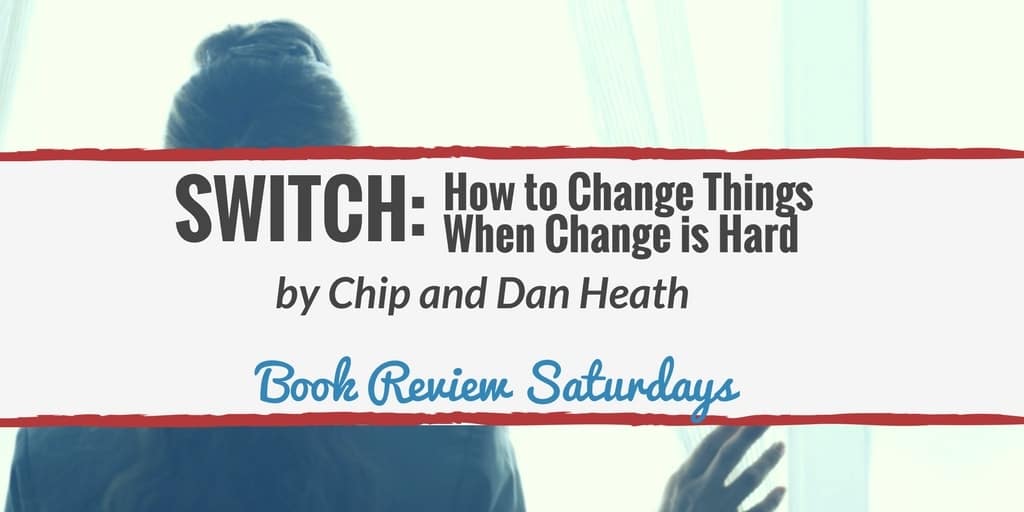There might be affiliate links on this page, which means we get a small commission of anything you buy. As an Amazon Associate we earn from qualifying purchases. Please do your own research before making any online purchase.
One of the major topics here on DevelopGoodhabits is change. We focus on how to change your habits, potential habits to change, and pitfalls to avoid when making changes. Chip and Dan Heath’s book, Switch is all about change.
For this week’s book review Switch seemed like the perfect fit. The subtitle of this book shows the reason I think this book is an important one: “How to Change Things When Change Is Hard”. That sums up change just about perfectly. Many people want to change, but are unsure of how to do it, where to start, or where they really want to end up.
Unlike most of the habit changes we discuss here on DGH, Switch focuses more about changing the thoughts and views of others. This is more of a book for leaders or those in the business world who may want to take a climate of apathy and turn it into one of excitement and possibility. But even though many of the lessons are about changing attitudes of others, these choices are also valuable for personal change.
In Switch, the brothers Heath focus on the difficulties people (and groups of people) have in changing their behavior. They look to an understanding of the mind and the way the human brain works to devise shortcuts that help make change easier.
Who This Book is For
Major ideas behind SWITCH: Rider, Elephant and Path
Switch uses a few metaphors that they return to again-and-again to show their major points. These three metaphors are show three of the major points they try to make about changing (both organizational change and habit change.)
The first metaphor is the elephant. This represents our emotional side. The elephant is slow to move. He wants to be fed his peanuts and pointed in the right direction. He needs reward. The Elephant can sometimes be out of control and getting him headed in the right direction and keeping him going is one of the difficulties of change.
The second metaphor is the rider. The rider is our rational side. The rider understands what we want to do. He can have some small effect on controlling where the elephant goes and how he acts. But his control over the stubborn elephant is limited. Our rational mind can also sometimes be the cause of problems such as procrastination.
The final metaphor is the path. This is the situation you want to change. One of the big points of habit change, is to always keep this path as simple and direct as possible. If your change is just getting from point A to point be in a direct route, it will almost always be doable. If the path is a long and arduous one over rocky terrain. Things will be difficult. The path what you want to change, how well you plan to do it and how clear your direction and planning for actually is for getting the change done.

Get your copy of “Switch” today!
These three simple concepts are used continuously throughout the book to illustrate many points about how our emotions, rational mind and situation can either help make change easier or ensure that change will always end in failure.
What Switch teaches us about habit change
Dealing with change (SWITCH style: elephant, rider, path)
Elephant: Best dealt with by motivation.
Rider: Best dealt with by setting clear goals.
Path: Make it as easy as possible to reach the goal at the end of the path.

Get your copy of “Switch” today!
Want to read other self-help books?
Are you interested in more stuff on changing habits?
We have a lot of articles here on DGH about change and changing habits. But the following 7 articles that will teach you the most about making habit changes (with one article giving some ideas on WHAT you can change):

